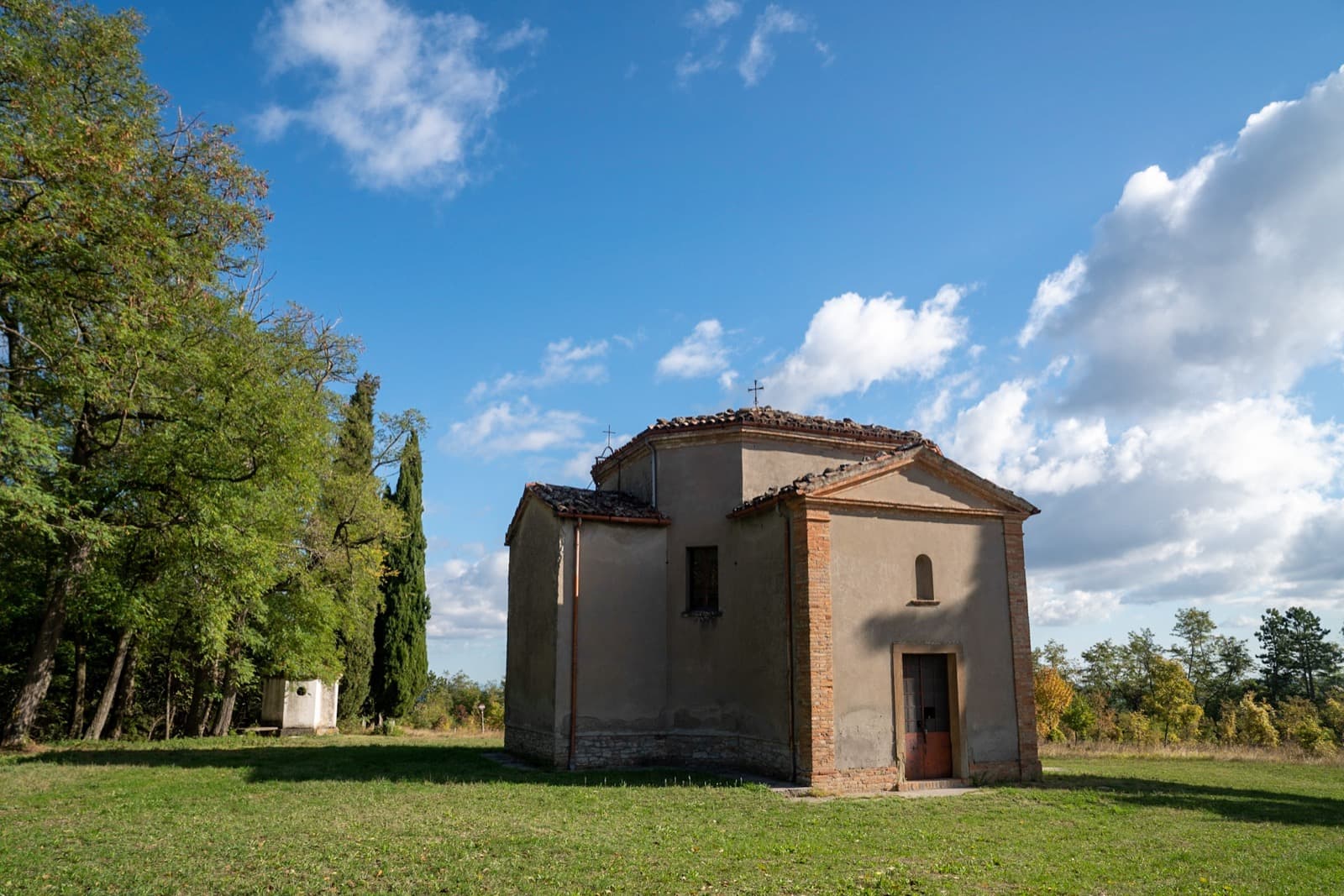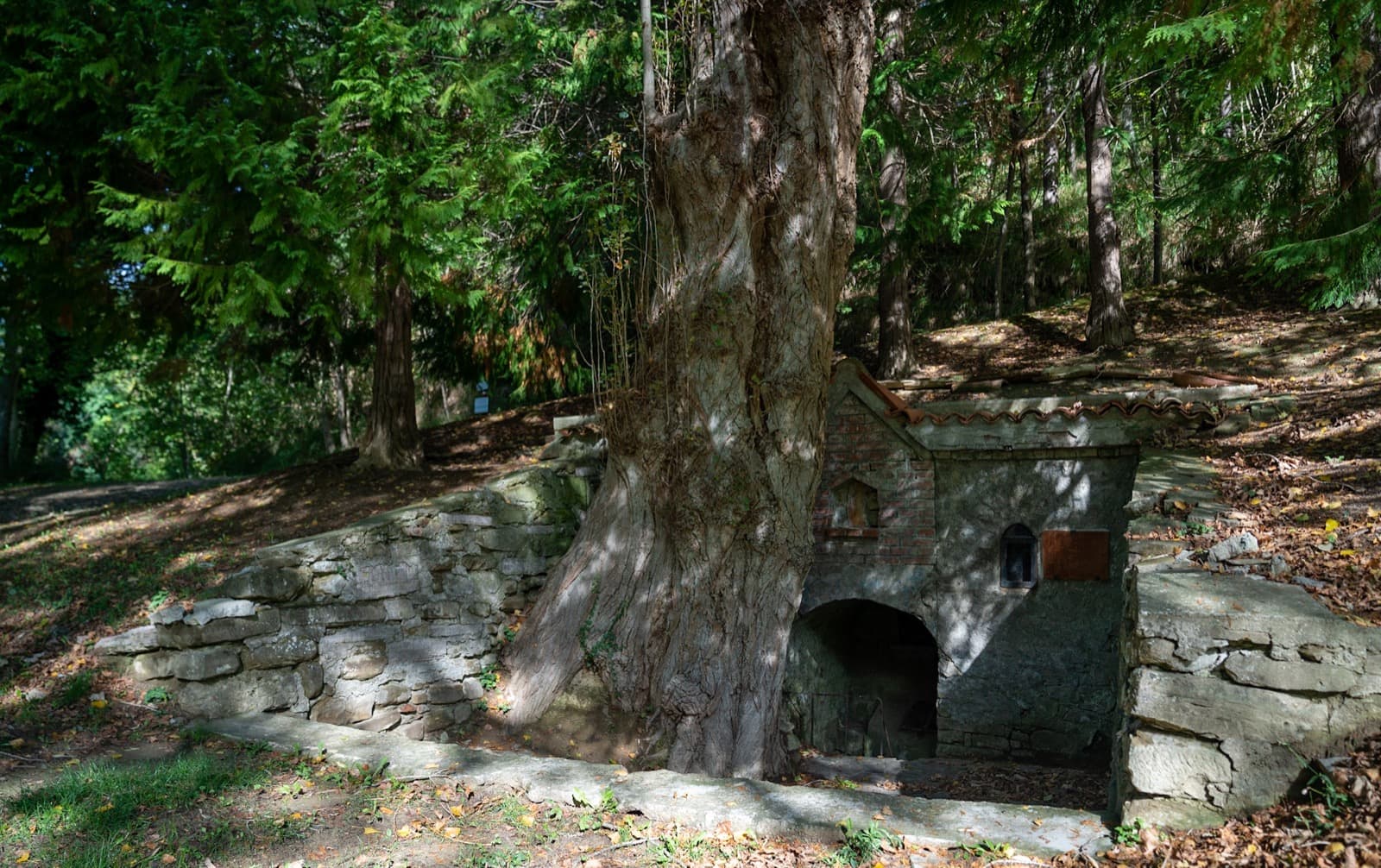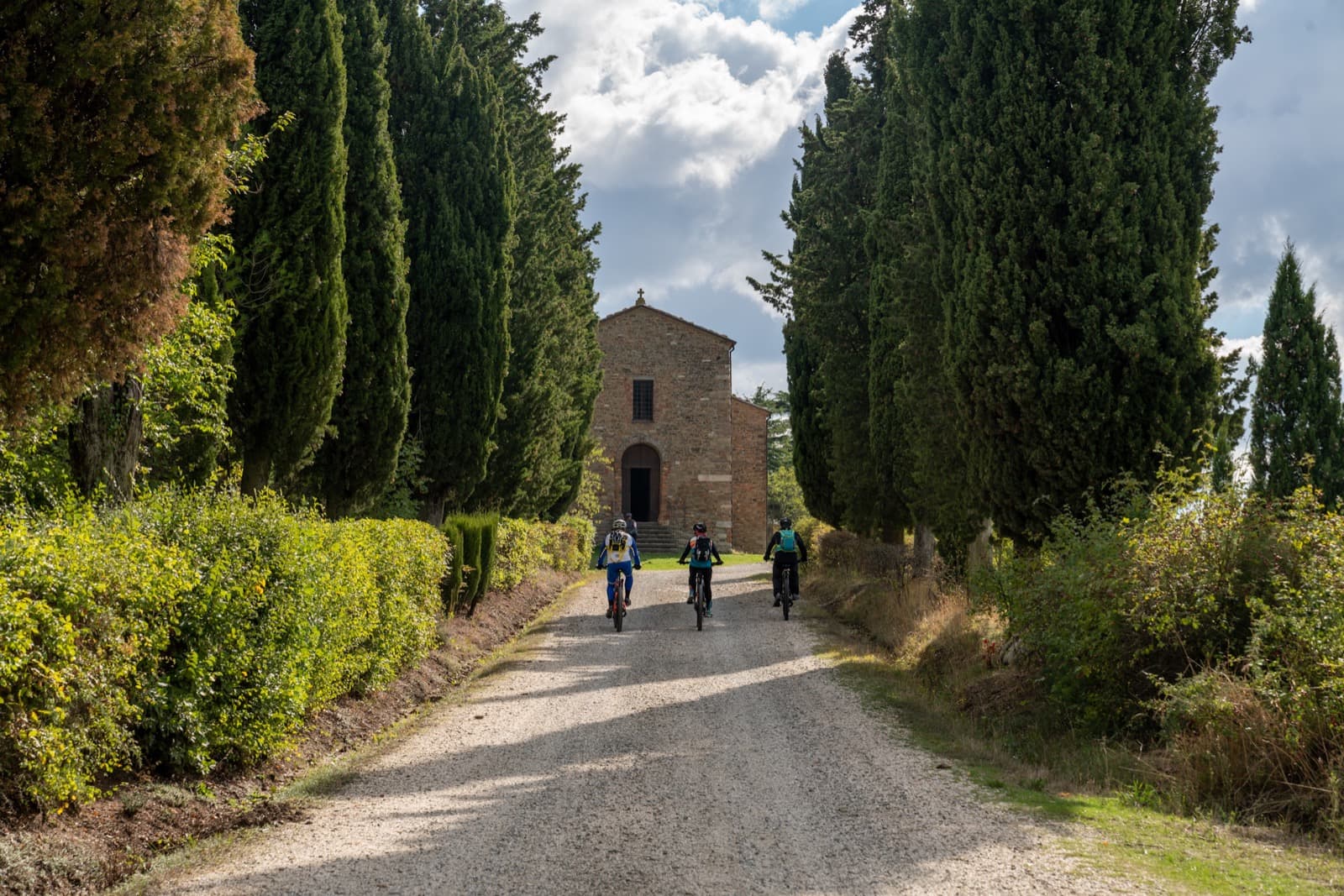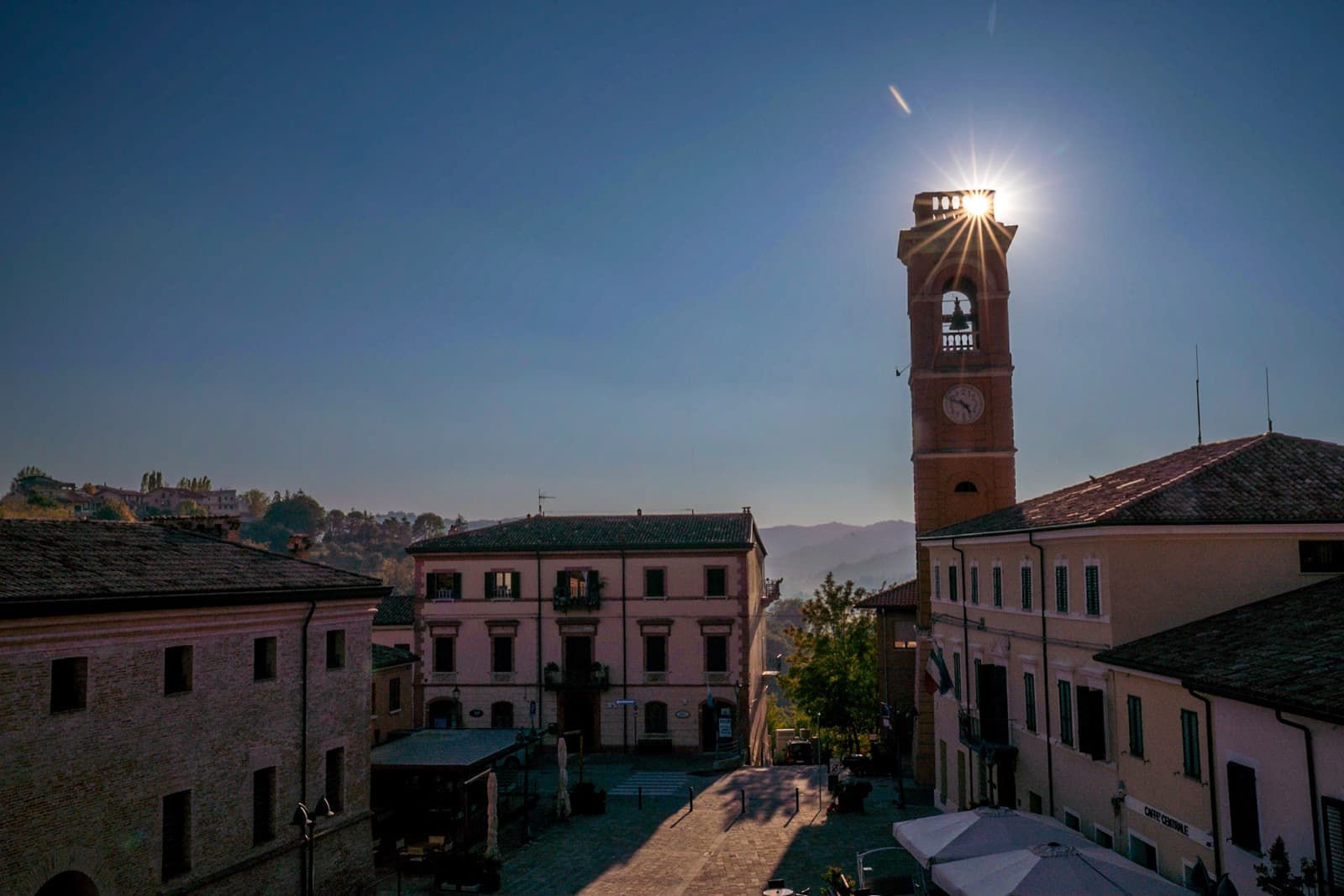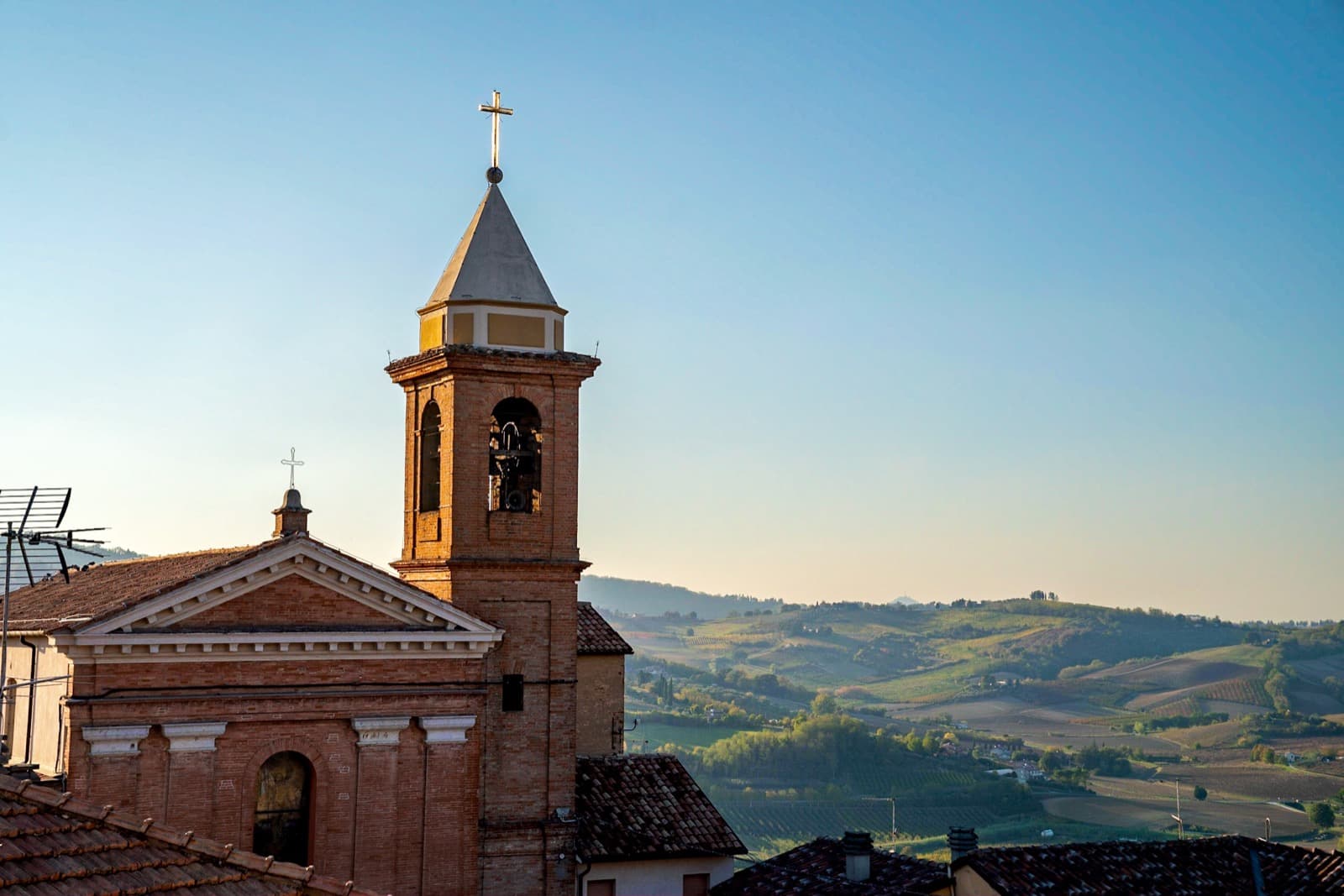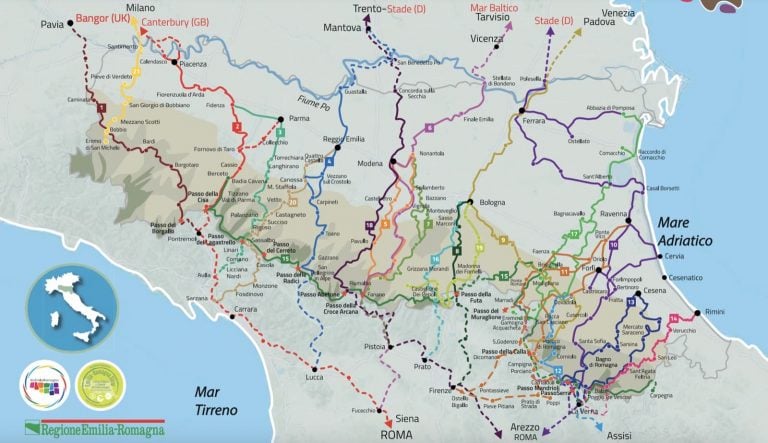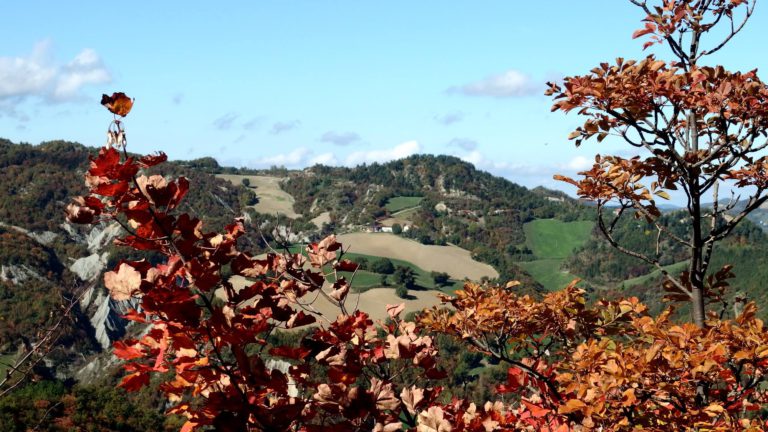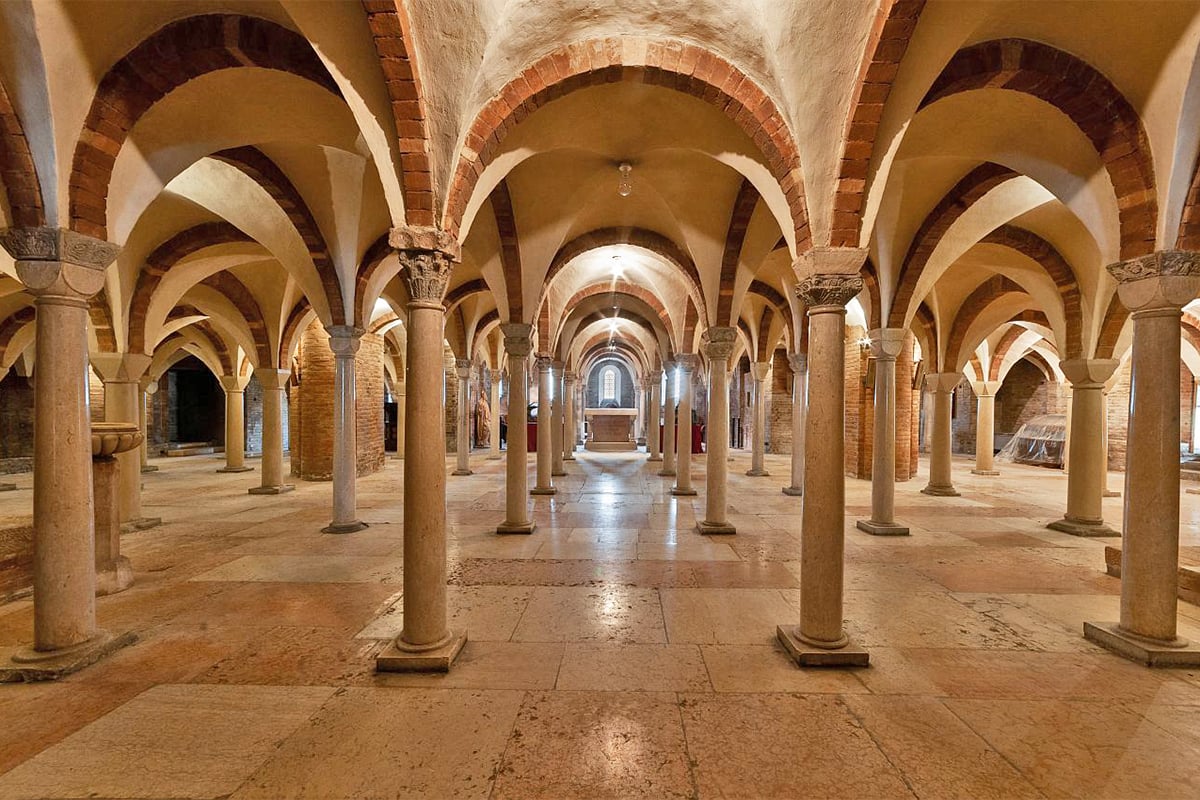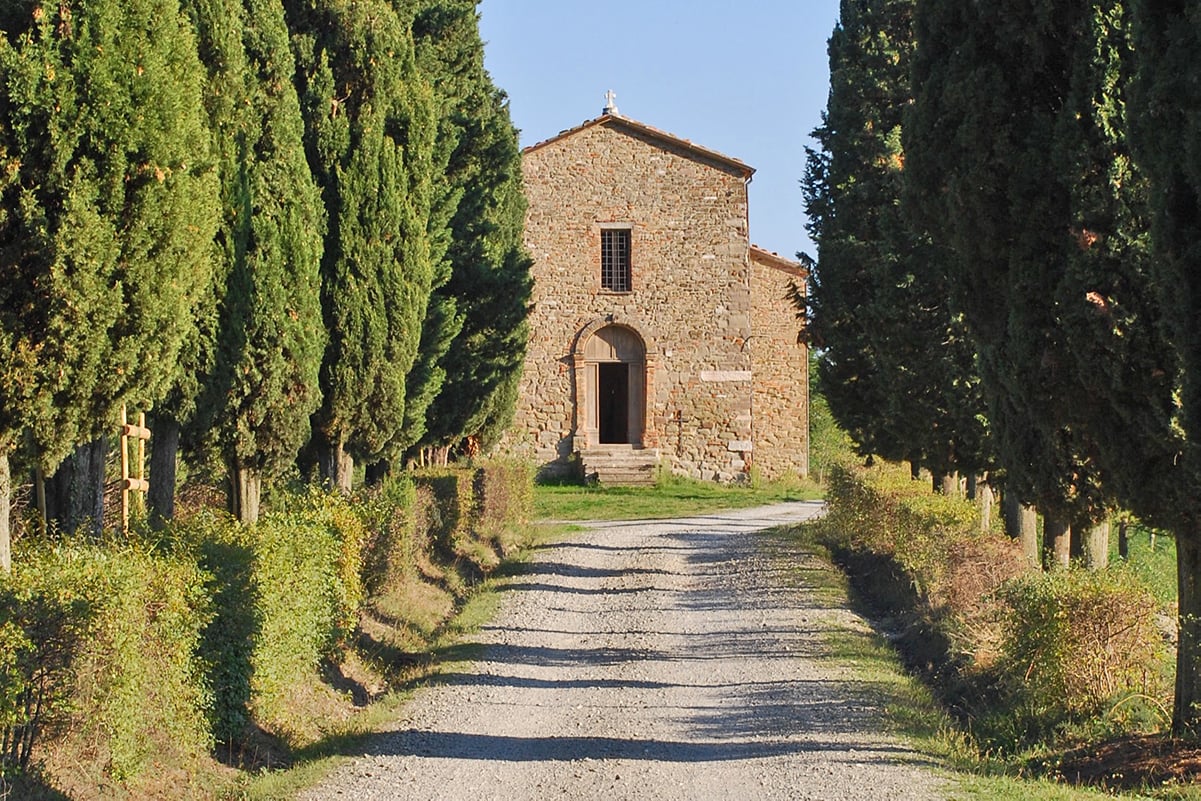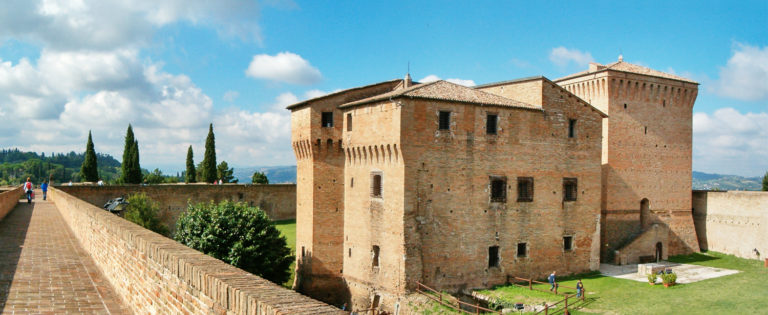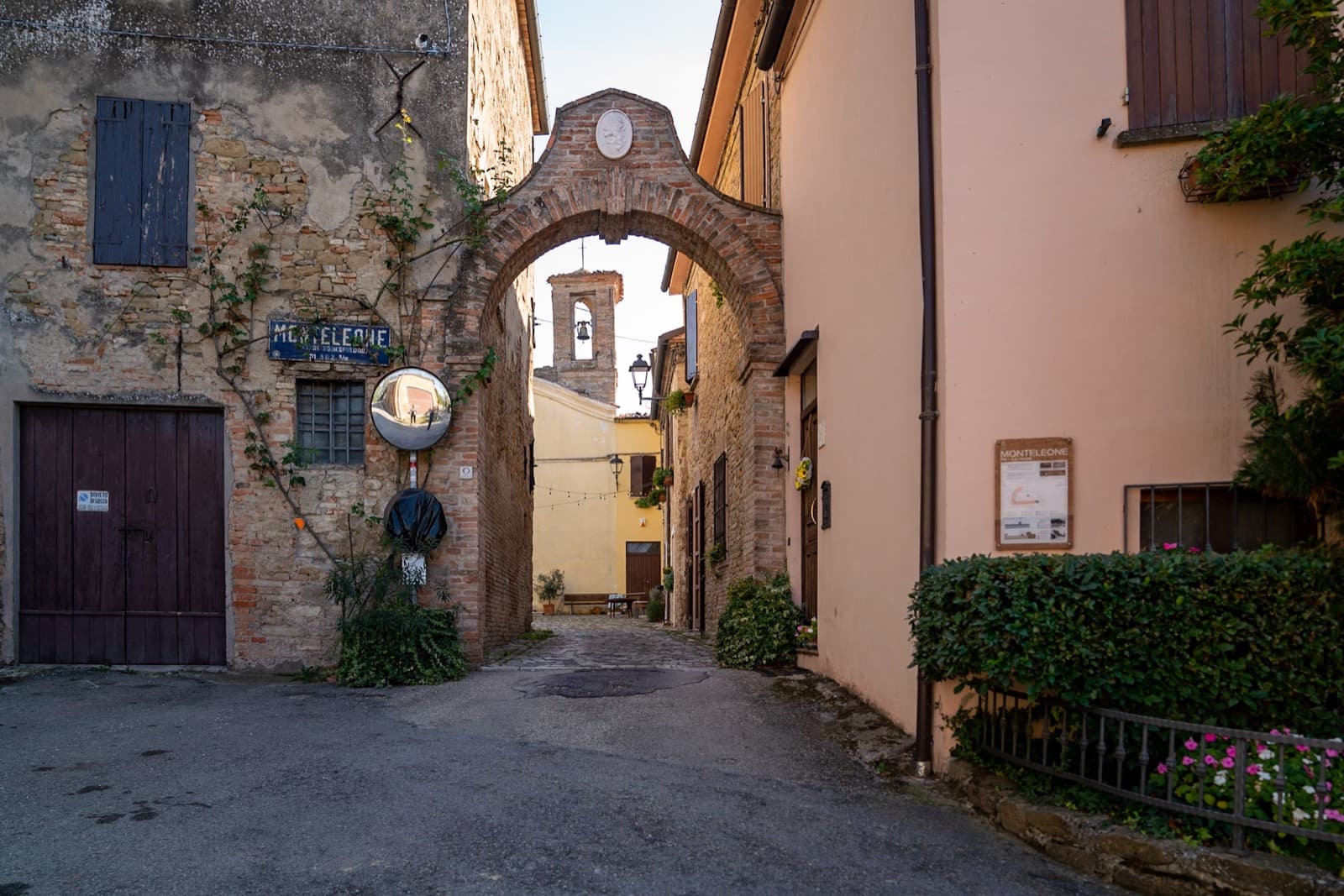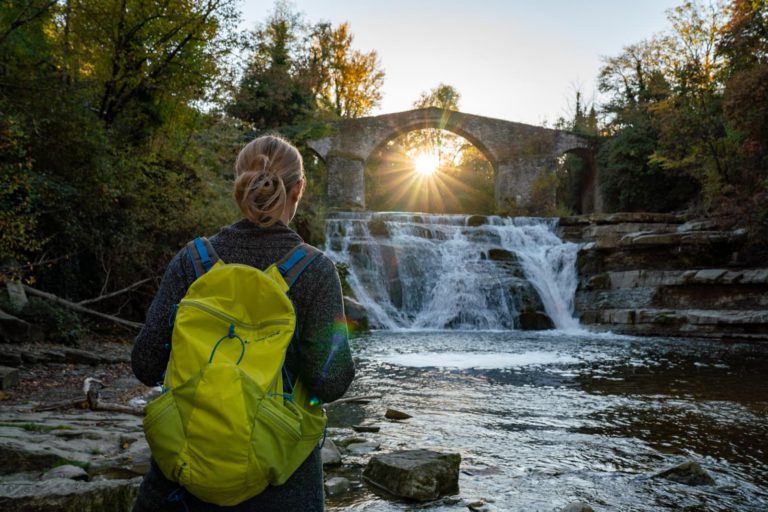Wander between ancient forests and hermitages, explore hilltop villages with views stretching all the way to the coast, surround yourself with history and spirituality – this is just part of what you’ll experience along the Cammino di San Vicinio, one of the most unique and offbeat long-distance paths in our region.
The Cammino di San Vicinio is 325 km long, following a loop-shaped itinerary between Romagna and Tuscany. It is divided in 14 different stages, ranging in duration between 9 and 37 km.
As the name suggests, the Cammino is meant to be covered on foot, but bike lovers will be happy to know there’s also a bike-friendly itinerary, the Ciclovia di San Vicinio.
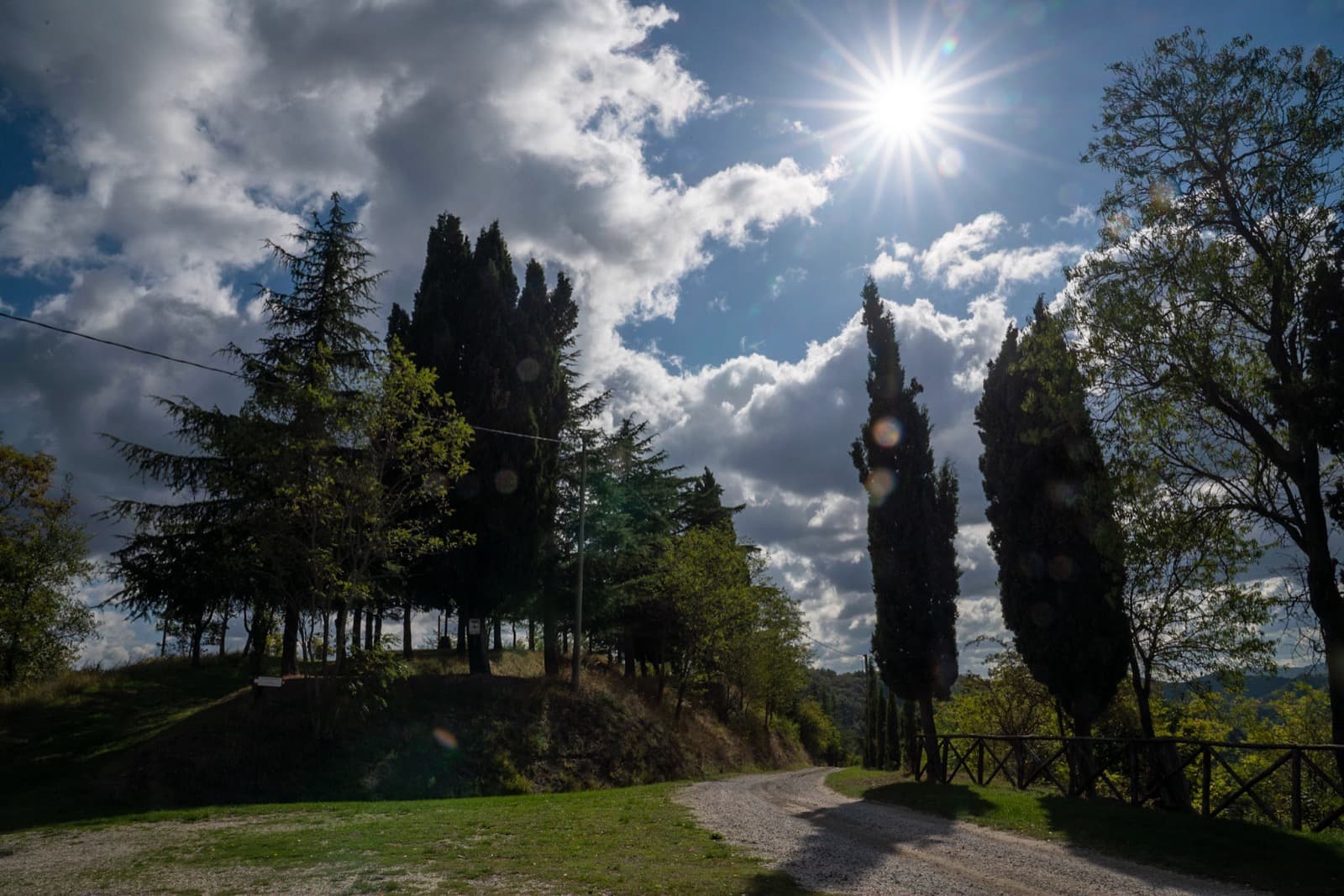
The Cammino was officially launched in 2009, but some of its sections are among the oldest pilgrimage routes in Italy, in use since the 4th century.
The route follows the footsteps of San Vicinio (Saint Vicinius), who lived in the mountains surrounding Sarsina between the 4th and 5th century.
Vicinio was originally from Liguria, but he crossed the Apennines and travelled to Romagna to escape persecution.
He spent most of his life in solitude, but soon became known as a healer, and scores of pilgrims travelled to him in search of cures and miracles. He was elected Bishop of Sarsina, a position he held for 30 years.
Miracles didn’t stop even after his death, and countless worshippers still visit Sarsina cathedral every day to receive blessings.
The Cammino is a way to learn more about the life and times of San Vicinio, while discovering a diverse itinerary extending from the Romagna hills to the Foreste Casentinesi National Park and Tuscan Apennines, then back towards the Adriatic following the course of the river Savio.
Let’s have a look at 7 iconic places along the Cammino di San Vicinio, a small selection of what you’ll discover along the way.
1. Sarsina
The Cammino di San Vicinio traditionally starts at Sarsina Cathedral, where a chain belonging to San Vicinio is still kept and used for blessings.
The thick metal chain was worn by the Saint when he prayed in the mountains, to weigh his neck down as he believed himself not to be worthy of looking at the sky.
You can choose to start your experience with a blessing, or just visit the chapel.
You’ll see the chain plenty of times along the way – it’s the symbol of the Cammino, and appears on trail markers.
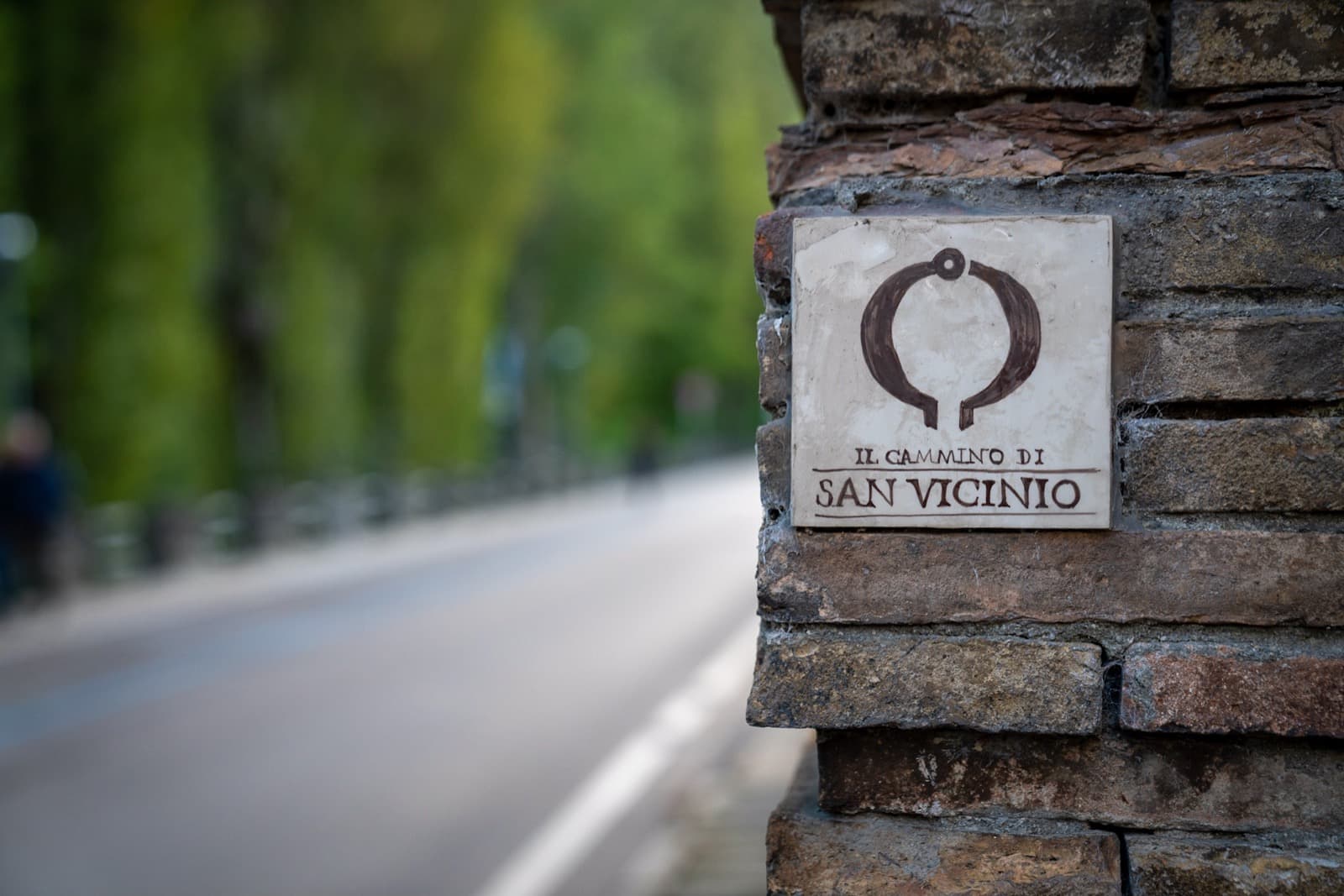
Sarsina was already an important town in Roman times, famous for its large necropolis and for being the birthplace of playwright Plautus.
It’s also worth visiting the archaeological museum to see some excavated mausoleums (monumental tombs) – if you find it closed, search out the Mausoleo di Obulacco, located in a public park.
2. Monte San Vicinio
Many places related to the life of San Vicinio are found in mountains and forests around Sarsina, and can be visited during the first two stages of the Cammino – or as a day trip from Sarsina if you are short of time.
Santuario di Monte San Vicinio | Credit:TheCrowdedPlanet
Fonte di San Vicinio | Credit: TheCrowdedPlanet
Pieve di Monte Sorbo | Credit: TheCrowdedPlanet
Santuario Monte San Vicinio is a tiny church set in a scenic position in the municipality of Mercato Saraceno, at an altitude of approximately 600 meters.
It was built in this location to mark one of the main spots where the Saint prayed and meditated with the chain now kept in Sarsina.
A few hundred meters down the hill you can also visit the Fonte di San Vicinio, known for the beneficial properties of its waters.
Don’t miss visiting the Parish church of Monte Sorbo, just 3 km away, a small Romanesque church worth visiting for its beautiful marbles contained inside.
3. Bagno di Romagna
If you’ve been on a long distance hike before, you’ll know that there’s nothing quite like soaking in warm waters at the end of the day. And if that day happens to be a tough 37 km day, even better!
Bagno di Romagna is the destination of the first stage of the Cammino from Sarsina. The town is an important thermal resort, known since Roman times for the benefits of its waters, rich in sulphur and sodium bicarbonate.
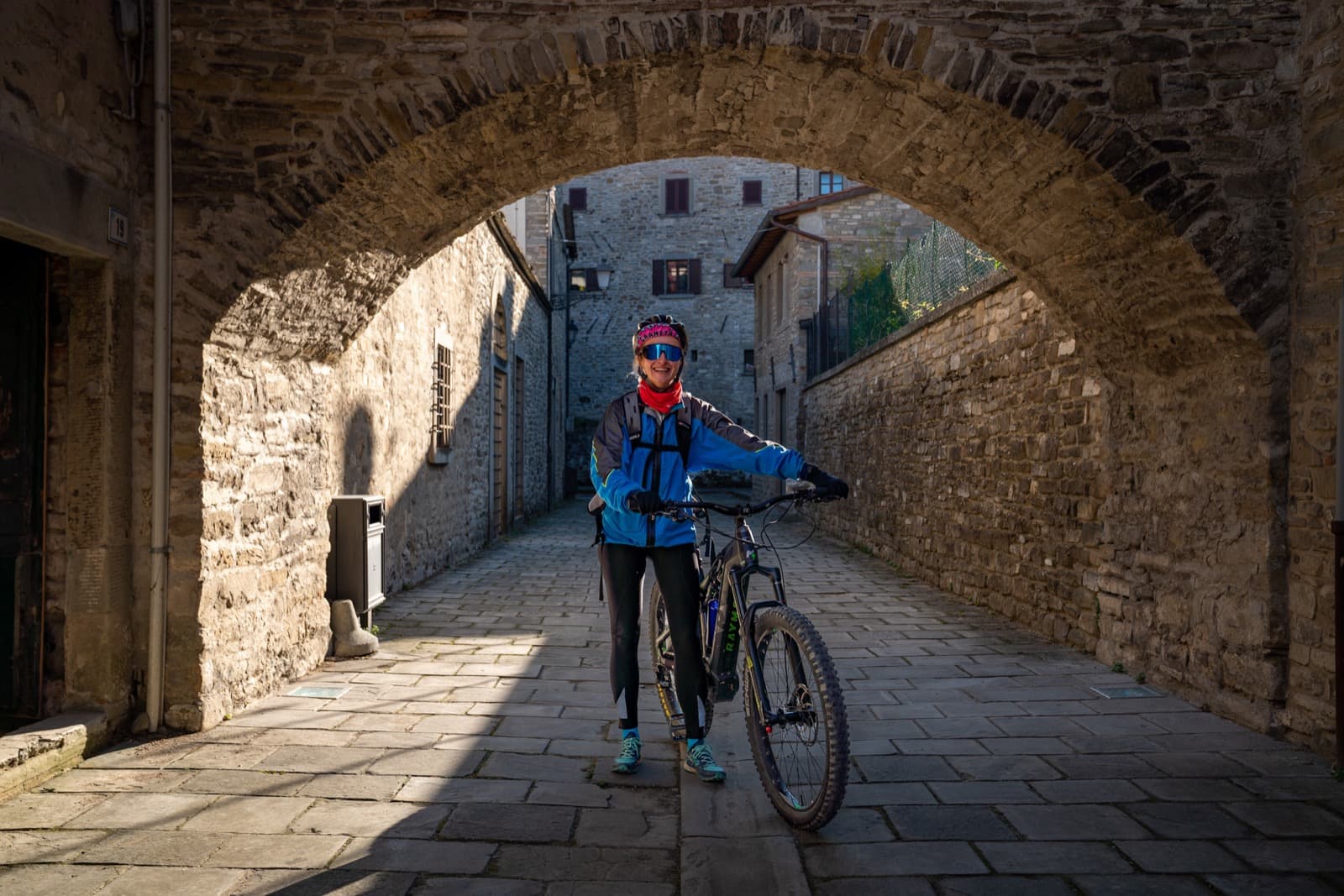
Staying in a spa hotel is the easiest way to relax and enjoy the thermal baths – access is free for guests, while non-guests need to book a timeslot in advance and get a ticket.
There’s another way to appreciate the beneficial effects of these waters. Walk under linden trees to Sorgente Chiardovo, a spring of drinkable thermal water where you can fill your water bottle.
4. Monte Fumaiolo
After Bagno di Romagna, the Cammino di San Vicinio enters Tuscany and the Foreste Casentinesi National Park, passing by sanctuaries and hermitages over the course of four days.
Then, the trail enters Romagna again, with a spectacular stage across Monte Fumaiolo, marking the highest point in the entire route at 1400 meters.
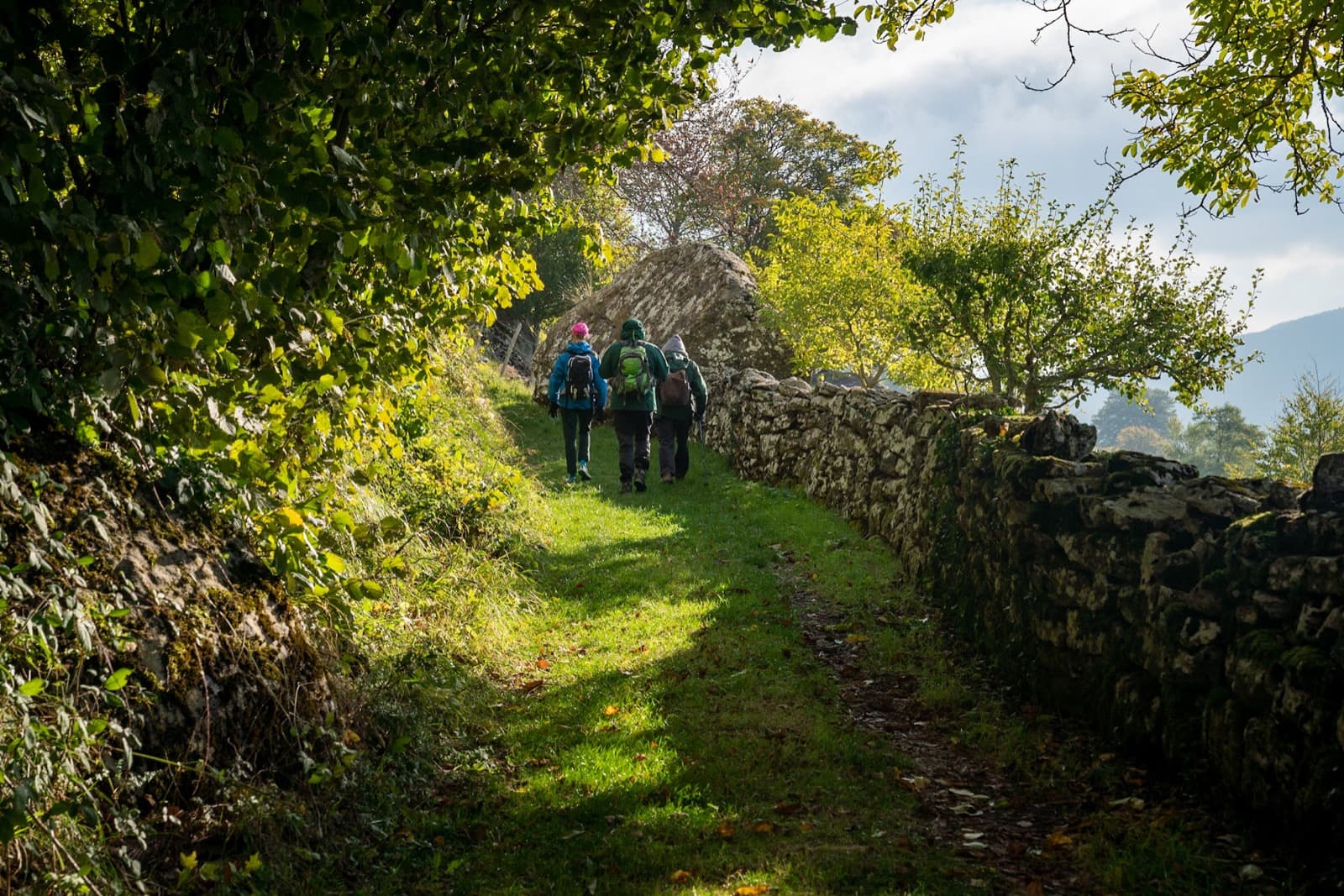
October is a magical time to visit, since the autumn foliage is at its best.
If you are lucky and reach the summit on a clear day, you’ll be able to appreciate a stunning view stretching all the way to the coast – exactly the direction the Cammino will follow from this point onwards.
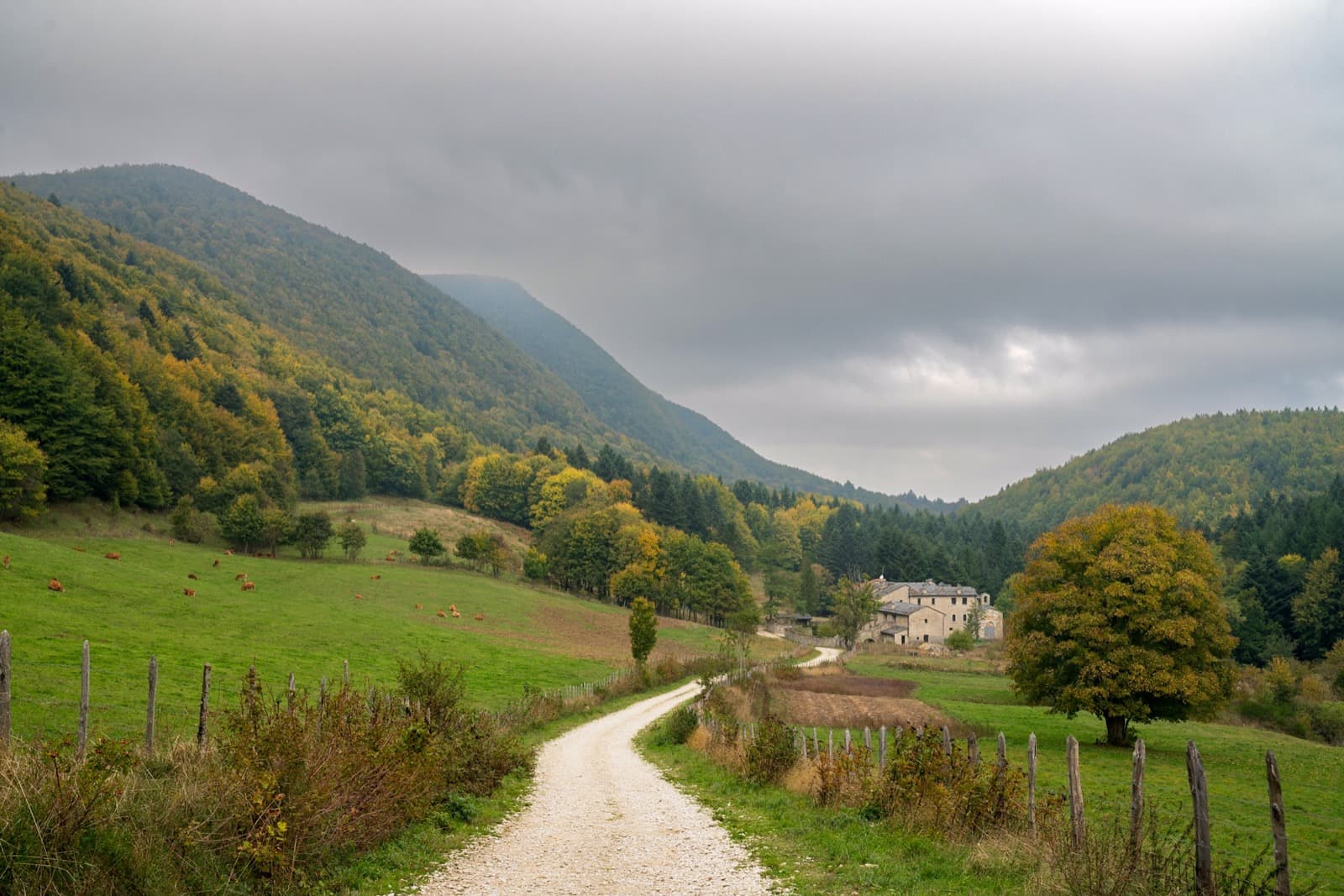
The Cammino also passes by the Eremo di Sant’Alberico, one of the few Medieval hermitages in these forests still active to this day.
It is traditionally inhabited by one single person, spending their life in prayer and solitude while taking care of upkeep and welcoming pilgrims visiting for spiritual purposes.
Monte Fumaiolo is also known for being the source of the River Tiber, Italy’s third longest flowing all the way to Rome.
There’s a Fascist-time monument marking the spot where water bubbles out of the ground into a tiny trickle, which eventually becomes Rome’s great river.
5. Sant’Agata Feltria
Those hiking along the Cammino di San Vicinio in October are in for a treat. Every Sunday, Sant’Agata Feltria hosts the world-famous truffle fair, filling the streets and alleyways of the village with truffle stalls, artisans demonstrating their crafts and all sorts of gifts for sale.
However, the real action is in the food tent, offering the opportunity to taste truffle-based dishes for a fraction of what you’d pay at a restaurant.
The fair is fun, but it does attract huge crowds. To avoid that, just visit on another day of the week – Sant’Agata is still a lovely place to wander around.
Don’t miss visiting Teatro Mariani, a 17th century theatre completely built with of wood, and Rocca Fregoso, the 10th century fortress overlooking the village.
6. Villages in the Rubicone Valley
The last four stages of the Cammino before reaching Cesena cross the Rubicone hills, gradually becoming softer as the Adriatic coast draws nearer.
This area is home to a host of pretty villages, each of them offering something unique and traditional.
One of the first you’ll encounter is Sogliano al Rubicone, still preserving the ancient technique of pit-aged cheese, used since the 16th century to protect cheeses from looters.
Cheeses are kept in stone pits for a period of time, sealed in specific ways to encourage or prevent fermentation, lending them truly unique flavours.
Another not-to-be missed village to explore in the area is San Giovanni in Galilea, part of the Borghi municipality.
San Giovanni is known for its cemetery built on the edge of a hill, with views resembling those from a ‘flying carpet’ in the words of a local poet.
Despite being home only to a few dozen people, the village hosts Museo Renzi, an eclectic museum with a variety of exhibits ranging from Prehistory to World War 1.
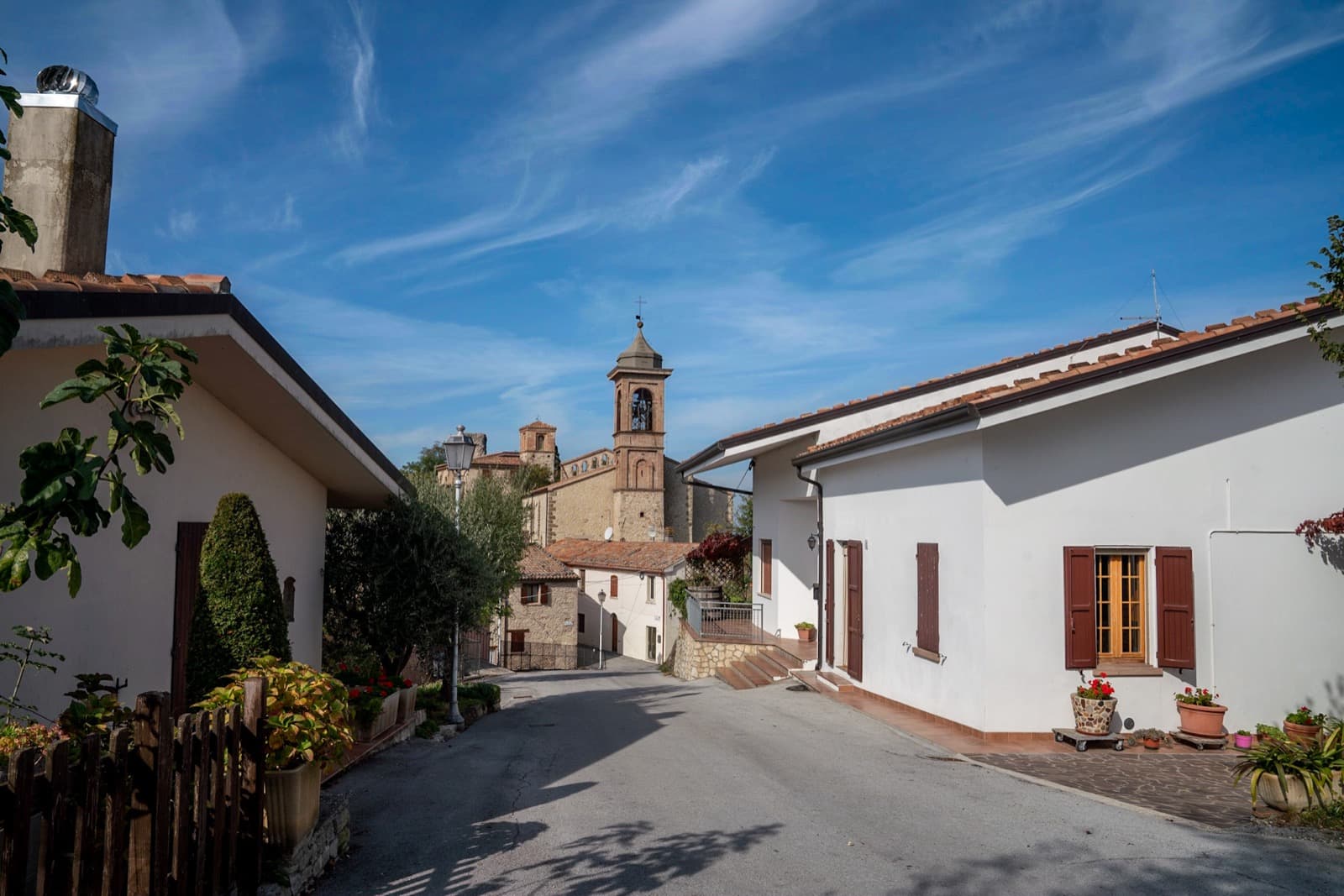
Montiano is the last hill village you’ll cross before starting the descent towards Cesena.
If you happen to be there for sunset, there are two great viewpoints in town – the heart-shaped castle, and the war memorial on top of a hill, with a circle of pines in memory of lives lost during WW1.
7. Cesena
The Cammino di San Vicinio includes many important places for Christian worship, like the Santa Maria del Monte Abbey just outside Cesena, a Benedictine monastery sitting on a hill overlooking the city.
You’ll be passing by Santa Maria del Monte before starting your descent towards Cesena – take some time to visit the elegant cloisters and Baroque exterior, and don’t miss checking out the ex-voto collection, one of the largest in the world.
Cesena is the largest town you’ll encounter along the Cammino di San Vicinio, which may come as a shock after so many days of silent woods and secluded villages.
Yet, it’s a chilled, pleasant place to explore, with portico-lined streets and some interesting sights.
If you’ve got some strength left, climb the hill to the Rocca Malatestiana, a fortress built to protect the historic centre of the city. A ring of walls surrounds two squat stone towers – the ‘Maschio’ (male) including a small exhibition with jostling saddles and armours, and the ‘Femmina’ (female) with old farm equipment. Don’t miss walking on top of the walls for views over the towers from above!
However, Cesena’s true gem has got nothing to do with churches or fortresses. It’s the Biblioteca Malatestiana, a public library opened in 1454 by the local nobleman Malatesta Novello.
It’s the first civic library in Europe, accessible to the public and unchanged since the day it opened its doors. Everything is original inside the library – from the long benches to the leather-bound manuscripts, and even the chains securing them to the tables.
After Cesena, the Cammino di San Vicinio heads back into Sarsina and it ends exactly where it started – in front of the Cathedral.
After walking on San Vicinio’s footsteps, maybe you’ll gain an understanding of why this mysterious healer saint still attracts pilgrims, almost two thousand years after his death.
If you are passionate about religious tourism, we invite you to visit two important websites:
→ www.camminiemiliaromagna.it
All the spiritual walks and pilgrimage routes of Emilia-Romagna with its 21 paths
→ www.monasteriemiliaromagna.it
Abbeys, cathedrals, monasteries: the treasures of the 15 Emilia-Romagna’s dioceses
Author
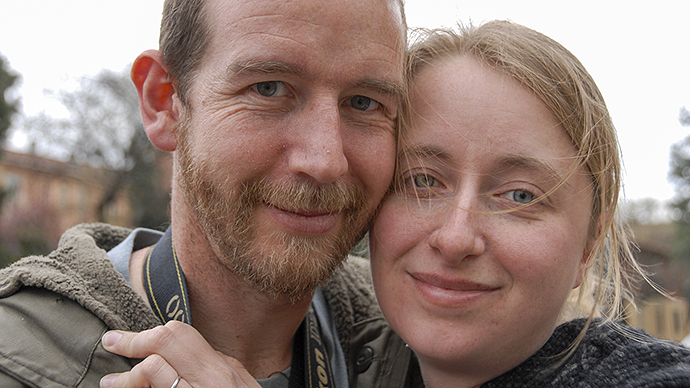
Margherita e Nick The Crowded Planet
Margherita and Nick, writer and photographer from Italy and Australia, are long-time travelers who love nature and outdoors.
Their blog is www.thecrowdedplanet.com
You may also like
Route Planner: Sloways in Emilia Romagna
by Walter Manni /// July 31, 2024
Emilia Romagna Slow | Saint Vicinio Way
by Walter Manni /// May 15, 2017
Monasteries and Spiritual walks in Emilia-Romagna
by Davide Marino /// May 3, 2019

Interested in our newsletter?
Every first of the month, an email (in Italian) with selected contents and upcoming events.
A weekend in the hills around Cesena: what to see and where to go
by Davide Marino /// November 6, 2020
